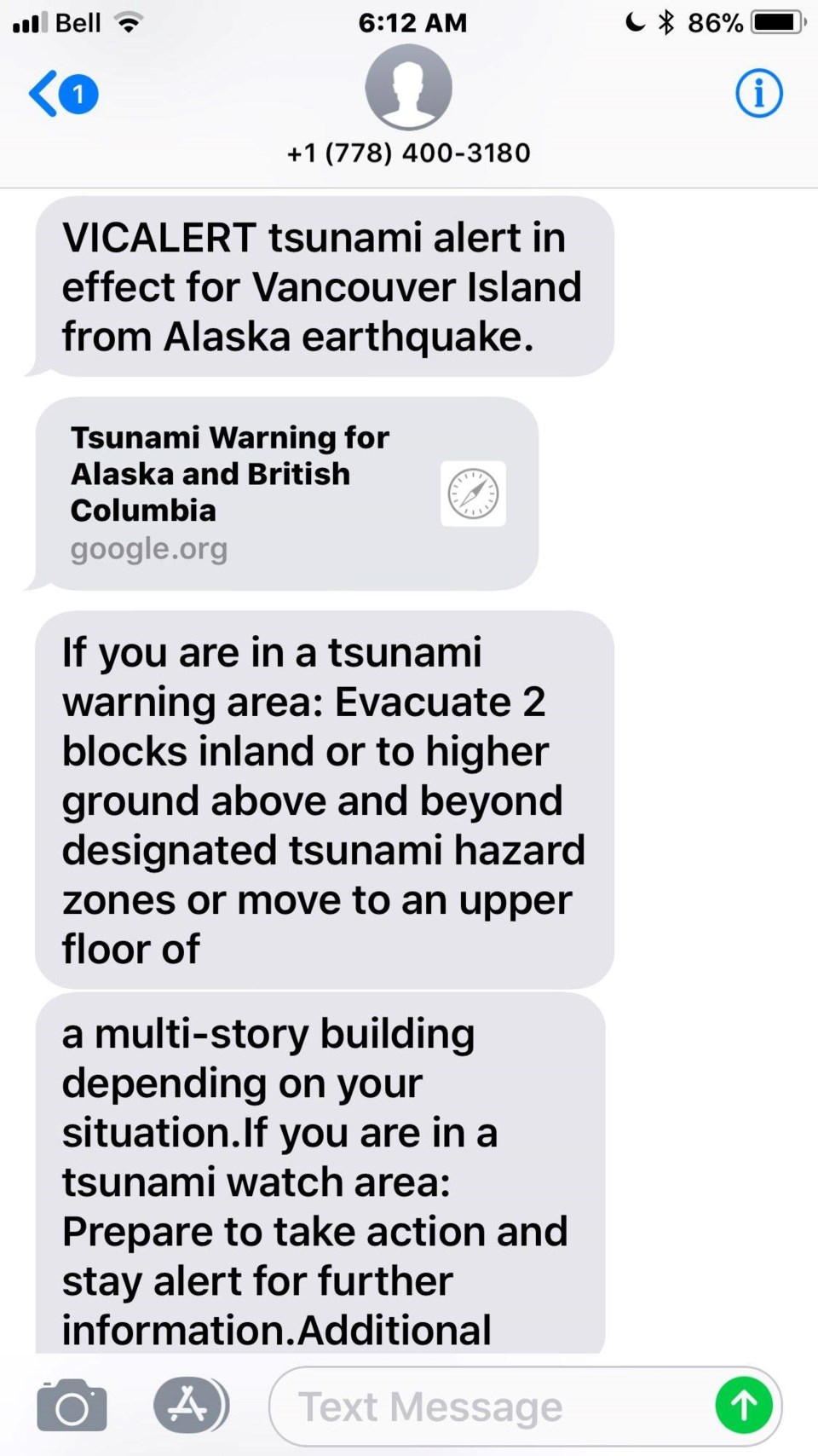Municipal governments are looking at adopting emergency notification systems in the wake of Tuesday’s tsunami warning, but those efforts could be trumped by a nationwide edict requiring Canadian wireless providers to send emergency alerts to customers’ cellphones by April.
The Canadian Radio-television and Telecommunications Commission order means that by April, 6, 2018, everyone on an LTE network must be able to receive the same public alerts now broadcast on radio and TV in the event of natural disasters or Amber Alerts about abducted children. The alerts will have a special tone and vibration so that people will know it’s not just an ordinary email or text.
That would bring Canada’s emergency alert system in line with that of the United States, where each state or county has the ability to send an alert to wireless carriers, which is then transmitted to customers. The messages can be targeted by geographic area so that anyone in the affected area is notified.
That’s the system used in Hawaii, which made headlines on Jan. 13 for erroneously warning people of an impending ballistic missile. It took 38 minutes to issue a correction.
The system “is not foolproof,” said Richard Rapoza, a spokesman for the Hawaii Emergency Management Agency. However, the false alarm ended up working as a test, which allowed emergency managers to identify holes in the coverage.
For example, some people didn’t receive the initial alert and Rapoza said the agency is trying to find out why.
Currently, Emergency Management B.C. operates AlertReady, a provincewide system that broadcasts public safety announcements via major television and radio broadcasters. The system is only used during large-scale disasters or emergencies where loss of life is imminent and possible.
This alert is in addition to information posted online and on social media at: emergencyinfobc.gov.bc.ca or Twitter at @EmergencyInfoBC.
The provincial emergency notification system also broadcasts warnings to local emergency co-ordinators, mayors and Indigenous communities. It is then up to the municipalities to decide whether they issue an emergency alert and not all of them use text message warning systems.
That’s why in the midst of Tuesday’s tsunami warning, people in Tofino heard warning sirens, while residents in low-lying areas of Saanich, Colwood and Esquimalt were roused by door-knocking firefighters, and some in Sooke were alerted by friends or neighbours.
The Capital Regional District sends a text message in the event of an emergency, but only to residents of electoral areas such as Salt Spring Island, the Southern Gulf Island and Juan de Fuca. The CRD did not send a tsunami alert on Tuesday morning.
Once Canadian cellular providers adopt the emergency alert technology in April, Emergency Management B.C. will begin testing alert models, a spokesman for the emergency co-ordination agency said.
Emergency Management B.C. said mobile-device customers will not be able to opt-out of the notifications, allowing blanket coverage for alerts.
“It would be a hugely valuable piece infrastructure technology to have in Canada and something that we’re currently lacking, said Shawn Corrigan, a Nanaimo-based emergency management analyst for Calian Group. Its effectiveness will rely on a co-ordinated crisis communications plan between federal, provincial, municipal and Indigenous governments, he said.
— With files from The Canadian Press



